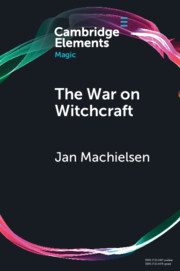Element contents
The War on Witchcraft
Published online by Cambridge University Press: 24 June 2021
Summary
Keywords
- Type
- Element
- Information
- Series: Elements in MagicOnline ISBN: 9781108953313Publisher: Cambridge University PressPrint publication: 22 July 2021



